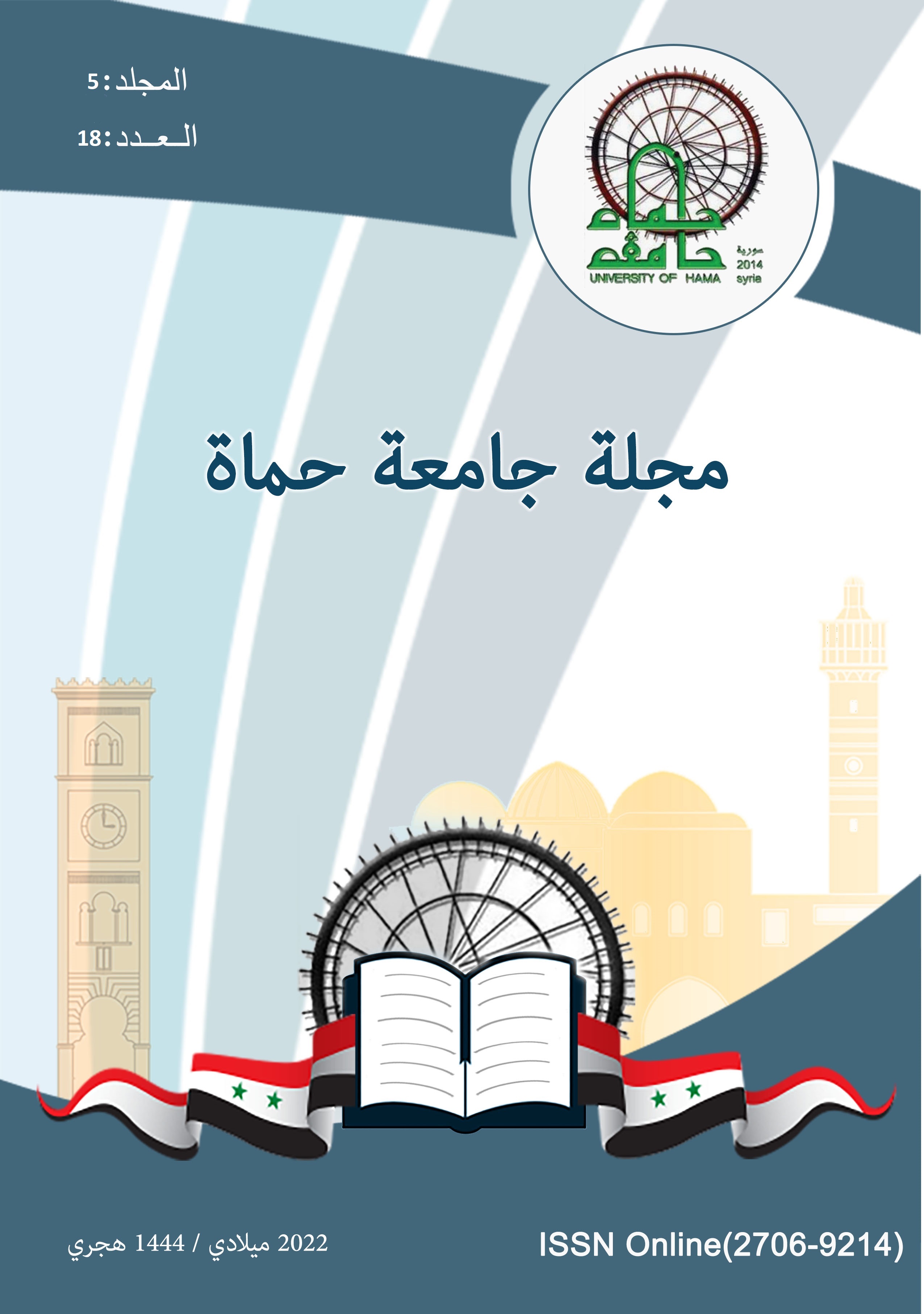تقييم معرفة وسلوك اختصاصيي مداواة الأسنان اللبية والممارسين العامين في سورية تجاه معالجات اللب الحي (بتر اللب التاجي ) في الأسنان الدائمة
الملخص
الملخص :
تركز الاهتمام في الآونة الأخيرة على الحفاظ على اللب السني قدر الإمكان من خلال معالجات اللب الحي Vital Pulp Therapies التي تعتمد على الإبقاء على حيوية ووظيفة النسيج اللبي في الأسنان الدائمة الحية. يهدف هذا البحث إلى استطلاع آراء وسلوك الممارسين العامين واختصاصيي مداواة الأسنان في سورية تجاه بتر اللب الحي في الأسنان الدائمة، والمواد المستخدمة في هذا السياق. شمل حجم العينة 472 اختصاصي مداواة لبية وطبيب أسنان ممارس عام في سوريا .تكون الاستبيان من 7 أسئلة حول بتر اللب التاجي في الأسنان الدائمة .وأظهرت النتائج أن 73.6 % من المشاركين على معرفة مسبقة بإجراء بتر اللب التاجي .69% من المشاركين قاموا بإجراء بتر اللب التاجي وكانت مادة الMTA هي الأكثر استخداماً بين المشاركين بنسبة 37 %و كان السبب الرئيس بنسبة الذي دفع الممارسين لإجراء بتر اللب التاجي هو الانكشافات النخرية غير المصحوبة بأعراض مثل الألم العفوي .وعد أغلب المشاركين هذا الاجراء اجراءً مرحلياً بنسبة 73 % وكان التخوف الأكبر من التموت اللبي التالي لبتر اللب الجذري بنسبة 72 %
تم تحليل البيانات بعد جمعها من المشاركين باستخدام تحليل كاي- مربع عند مستوى دلالة 0.05
المراجع
2. Akhlaghi, N. and A. Khademi (2015). "Outcomes of vital pulp therapy in permanent teeth with different medicaments based on review of the literature." Dental research journal 12(5): 406.
3. Alqaderi, H. E., S. A. Al-Mutawa and M. A. Qudeimat (2014). "MTA pulpotomy as an alternative to root canal treatment in children's permanent teeth in a dental public health setting." Journal of dentistry 42(11): 1390-1395.
4. Asgary, S., M. Fazlyab, S. Sabbagh and M. J. Eghbal (2014). "Outcomes of different vital pulp therapy techniques on symptomatic permanent teeth: a case series." Iran Endod J 9(4): 295-300.
5. Basmadjian-Charles, C., P. Farge, D. Bourgeois and T. Lebrun (2002). "Factors influencing the long-term results of endodontic treatment: a review of the literature." International Dental Journal 52(2): 81-86.
6. Brizuela, C., A. Ormeño, C. Cabrera, R. Cabezas, C. I. Silva, V. Ramírez and M. Mercade (2017). "Direct Pulp Capping with Calcium Hydroxide, Mineral Trioxide Aggregate, and Biodentine in Permanent Young Teeth with Caries: A Randomized Clinical Trial." J Endod 43(11): 1776-1780.
7. Chin, J., M. Thomas, M. Locke and P. Dummer (2016). "A survey of dental practitioners in Wales to evaluate the management of deep carious lesions with vital pulp therapy in permanent teeth." British Dental Journal 221(6): 331-338.
8. Chisini, L. A., M. C. M. Conde, M. B. Correa, R. V. F. Dantas, A. F. Silva, F. G. Pappen and F. F. Demarco (2015). "Vital pulp therapies in clinical practice: findings from a survey with dentist in Southern Brazil." Brazilian dental journal 26: 566-571.
9. Dammaschke, T., A. Nowicka, M. Lipski and D. Ricucci (2019). "Histological evaluation of hard tissue formation after direct pulp capping with a fast-setting mineral trioxide aggregate (RetroMTA) in humans." Clinical oral investigations 23(12): 4289-4299.
10. Endodontists, A. A. o. (2003). Glossary of endodontic terms, American Association of Endodontists.
11. Morotomi, T., A. Washio and C. Kitamura (2019). "Current and future options for dental pulp therapy." Jpn Dent Sci Rev 55(1): 5-11.
12. Parirokh, M. and M. Torabinejad (2010). "Mineral trioxide aggregate: a comprehensive literature review--Part I: chemical, physical, and antibacterial properties." J Endod 36(1): 16-27.
13. Rajasekharan, S., L. C. Martens, R. Cauwels and R. P. Anthonappa (2018). "Biodentine™ material characteristics and clinical applications: a 3 year literature review and update." Eur Arch Paediatr Dent 19(1): 1-22.
14. Ricucci, D., S. Loghin and J. F. Siqueira, Jr. (2014). "Correlation between clinical and histologic pulp diagnoses." J Endod 40(12): 1932-1939.
15. Schmalz, G. and A. J. Smith (2014). "Pulp development, repair, and regeneration: challenges of
16. the transition from traditional dentistry to biologically based therapies." J Endod 40(4 Suppl): S2-5.
17. Simon, S., M. Perard, M. Zanini, A. J. Smith, E. Charpentier, S. X. Djole and P. J. Lumley (2013). "Should pulp chamber pulpotomy be seen as a permanent treatment? Some preliminary thoughts." Int Endod J 46(1): 79-87.
18. Stangvaltaite, L., F. Schwendicke, C. Holmgren, M. Finet, M. Maltz, K. Elhennawy, E. Kerosuo and S. Doméjean (2017). "Management of pulps exposed during carious tissue removal in adults: a multi-national questionnaire-based survey." Clinical Oral Investigations 21(7): 2303-2309.
19. Taha, N. A. and M. A. Khazali (2017). "Partial Pulpotomy in Mature Permanent Teeth with Clinical Signs Indicative of Irreversible Pulpitis: A Randomized Clinical Trial." J Endod 43(9): 1417-1421.
20. Vargas, K. G., A. B. Fuks and B. Peretz (2016). Pulpotomy techniques: cervical (traditional) and partial. Pediatric Endodontics, Springer: 51-70.
21. Fink A (1995) How to Ask Survey Questions. London: SAGE publications Ltd.


